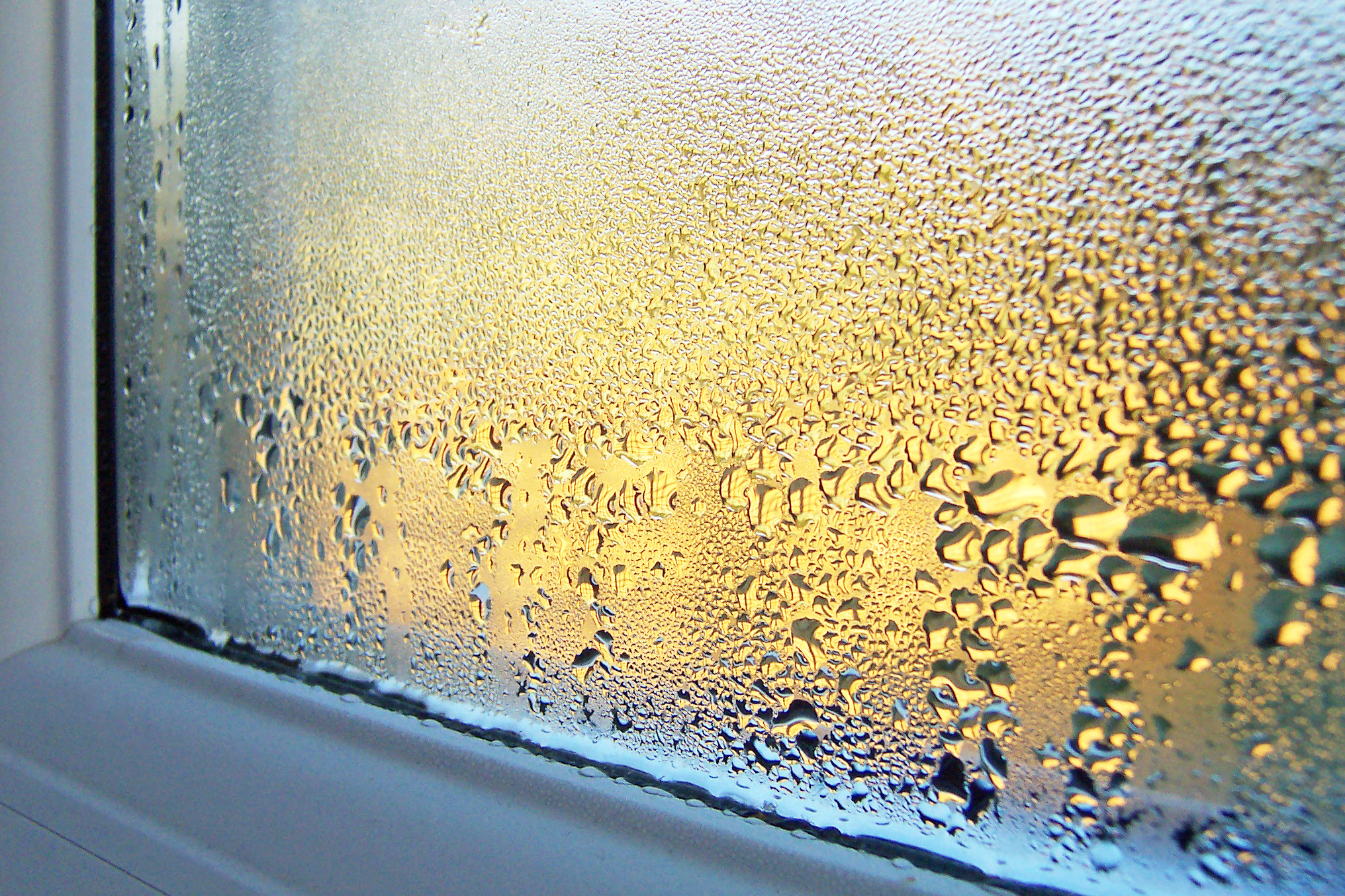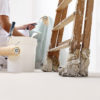dealing with damp
There’s no doubt about it, discovering damp in your flat is a real downer. But what causes it and what can you do about it?
At PBM we’ve got a ton of experience in dealing with property issues just like this. Here are our tips on finding out what’s causing your damp problem and what to do about it.
What’s causing the damp in my flat?
So, you’ve noticed mould on your walls or perhaps the walls feel damp to the touch? The first thing to do is try and figure out what’s causing it.
Condensation
The most common cause of damp is condensation, and luckily, it’s also one the easiest to deal with. Older properties are less well insulated and are normally more susceptible to condensation, as solid brick walls and single glazed windows become colder, allowing the dew point (the point where water condensates) to be more easily reached and condensation water droplets to form.
This means that water created by every day activities, from washing and drying clothes to showering and even breathing, becomes trapped inside. Once warm moisture cools and settles on cool surfaces such as walls, doors and windows, it then condenses and causes damp and mould.
What you can do about it
There are some simple steps you can take to reduce the amount of condensation in your flat. Why not try…
- Opening the bathroom window (if you have one) after a shower or bath, and leaving the bathroom door open to let damp air find its way out
- Picking up a dehumidifier which sucks up the water in the atmosphere
- Consider a self-condensing tumble dryer, or simply hanging clothes to dry on a balcony or by an open window (but, don’t forget to check what is permitted in the terms of your lease or rental agreement. We have known tenants to be fined for hanging their smalls in the hall!)
- Using extractor fans wherever available, and leave them going for a while after you’ve finished cooking or showering
- Making sure ventilation and airways, such as vents on the windows, are not blocked or obstructed
- Keeping your heating at a constant temperature during the months it’s on
- Regularly check and renew sealants around shower trays/baths and tile grout
Penetrating damp
If the damp is in one patch or area of the wall, you could be facing penetrating damp, which means water is coming through from the outside.
What you can do about it
Take a look around outside the building and see if you can see:
- Patches of brickwork or render that are damaged or have come away
- Faulty guttering that’s cracked, blocked or overflowing
- Any issues with the roof (if you can see it) – especially if it’s a flat roof
Leaks can also occur below windows if the window is not fitted properly.
If you can spot a problem and think penetrating damp could be the issue you’ll need to get in touch with the building owner (landlord) or their property management company to come and inspect the problem. If the management company is worth their salt, they’ll send someone out quick smart and get it sorted without delay.
Rising damp
If you’re in a ground floor flat, then rising damp could be the problem. If the damp seems to be coming up from ground level or is only affecting the lower parts of the wall (up to 1.2 metres) it’s possible you’re affected by rising damp. You might see signs of peeling paint or mould on the lower portion of your walls, or your skirting might be coming away from the wall or warping.
What you can do about it
The first thing to do is check that none of the appliances within your flat are leaking water behind the skirting. This isn’t rising damp, but can often be mistaken for it, if water has been slowly seeping out from behind an appliance and working its way behind units or under wooden flooring. If you discover a drip, get this fixed as soon as possible and then give the damp time to dry out.
If it isn’t an internal leak, then take a look around outside your flat. You’re looking for anything that may have bridged the damp proof course, so for example soil that’s piled up against the side of the building or a new patio perhaps.
If you can easily remove the obstruction, then do so and see if that improves things. If not, it’s possible that the damp proof course has failed and so will need to be replaced or fixed. In that case contact the building’s landlord or property management company to share your concerns.
Dealing with mould
Once you’ve got to the bottom of what’s causing your damp problem and the source of the problem has been fixed, you may find you’re still left with the black mould inside your property (depending on whether any work carried out extended to internal fixes).
If so, here are some top tips for dealing with the unsightly black stuff:
- Use a mould removal kit (not bleach as this can actually make the problem worse)
- Spray the walls with anti-microbial treatment or use a specially designed anti-mould paint
- In the bathroom seal grout with two coats of grout sealer
Note: Please be careful and wear protective gear when dealing with mould because mould spores can be very dangerous when inhaled. If in doubt, seek specialist help.
No more mould
So there you have it, some simple tips to help you get to grips with the damp in your flat – have a happy mould-free future!
Extra tip for building owners
If you’re a landlord, then the ‘damp’ might sound like another word for ‘expensive’! And you’re right, left unchecked damp can be one big costly pain in the backside. That’s why it’s really important not to bury your head in the sand.
As with anything property management related, the key here is to plan ahead. Regular inspections of your property will ensure that any potential causes of damp can be spotted before they ever become a problem. Careful money management can also ensure you have enough in the coffers to deal with costly repairs if needed.
And, as with most things, regular communication plays a vital role. If you have a good relationship with your people in your block, then issues like leaks or signs of damp, can be raised and dealt with quickly.
For more advice on dealing with damp in your apartment block, or other aspects of property management, give us a shout today.






